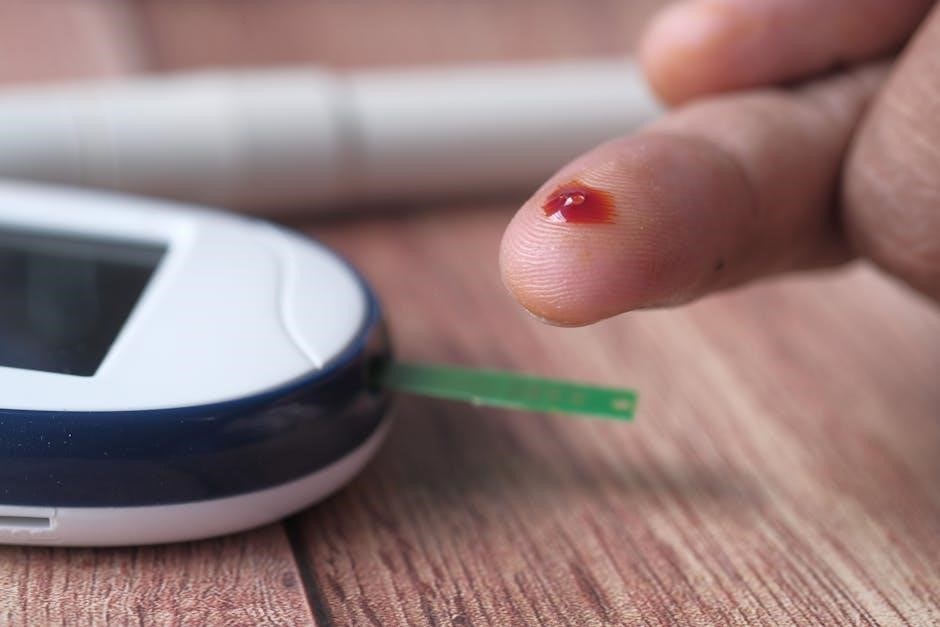Behavior self-monitoring worksheets/checklists are tools that help students track and assess their own actions, promoting accountability and reflection. These resources are especially useful in special education, supporting students with autism, ADHD, and other behavioral challenges by fostering independence and self-awareness. They often include visual charts, daily/weekly checklists, and goal-setting templates to encourage positive behavior and provide educators with valuable data for support strategies.
What is a Behavior Self-Monitoring Worksheet?
A behavior self-monitoring worksheet is a tool designed to help students track and evaluate their own actions and behaviors. It typically includes customizable charts, checklists, or goal-setting templates that allow students to rate their behavior against specific targets. These worksheets often feature visual elements, such as smiley faces or rating scales (e.g., “Amazing,” “OK,” or “Try Again”), making them accessible for various learning styles. Students can use these tools to assess their behavior at intervals, fostering accountability and self-awareness. The worksheets are particularly beneficial for students with special needs, such as autism or ADHD, as they provide a structured way to monitor progress and align with individualized education plans (IEPs). By promoting self-reflection, these resources empower students to take an active role in managing their behavior.
Importance of Self-Monitoring in Behavior Management
Self-monitoring is a powerful strategy in behavior management that fosters self-awareness, accountability, and personal growth. By actively tracking their actions, students develop a deeper understanding of their behavior, enabling them to make informed decisions and improvements. This approach empowers students to take ownership of their conduct, reducing reliance on external prompts. Self-monitoring also enhances teacher-student collaboration, as it provides a shared framework for setting and achieving goals. For students with special needs, such as autism or ADHD, self-monitoring tools offer a structured and visual method to manage behaviors, aligning with individualized education plans (IEPs). Overall, self-monitoring promotes independence, social-emotional learning, and long-term behavioral success, making it a valuable tool in educational settings.

Key Components of a Behavior Self-Monitoring Checklist
A behavior self-monitoring checklist includes customizable charts, self-assessment tools, and data tracking sheets. These components help students track progress, set goals, and reflect on their behavior effectively.
Customizable Behavior Charts

Customizable behavior charts are versatile tools that allow students to track specific behaviors, such as staying on-task or using kind words. These charts often feature visual ratings systems, enabling students to assess their behavior as “Amazing,” “OK,” or “Try Again.” Available in multiple versions, they can focus on 1 to 5 target behaviors, making them adaptable to individual needs. Teachers can tailor the charts to align with classroom goals or individualized behavior plans. By providing a clear and structured format, these charts help students develop self-awareness and take ownership of their actions. They also serve as effective communication tools between students, teachers, and parents, fostering consistency and support across different settings.
Behavior Self-Assessment Tools
Behavior self-assessment tools empower students to evaluate their own actions and emotions, fostering self-awareness and personal growth. These tools, such as daily and weekly checklists, allow students and teachers to collaboratively rate behavior using smiley faces or a 1-5 scale, ensuring accuracy and consistency. By identifying positive and areas for improvement, students can set achievable goals and develop strategies to manage their behavior. These tools also encourage reflection, helping students understand the impact of their actions and make informed decisions. The data collected can be used to adjust behavior plans, celebrate progress, and provide targeted support, making self-assessment a powerful component of behavior management and social-emotional learning.
Check-In/Check-Out (CICO) Systems
Check-In/Check-Out (CICO) systems are structured behavior management tools that provide students with consistent feedback and support throughout the school day. At check-in, students set daily behavior goals and discuss expectations with teachers. During check-out, they reflect on their progress, rating their performance and discussing challenges. This system fosters accountability and self-reflection while reinforcing positive behavior. CICO systems are particularly effective for students with special needs, such as autism or ADHD, as they provide clear routines and visual supports. By combining goal-setting, mood assessment, and reflection, CICO systems help students develop self-regulation skills and improve their ability to manage their behavior independently. This approach is often integrated into behavior intervention plans and social-emotional learning programs.
Behavior Data Tracking Sheets
Behavior data tracking sheets are essential tools for monitoring student progress and identifying patterns in behavior. These sheets allow educators to record the frequency and duration of specific behaviors, providing valuable insights into a student’s actions over time. By documenting occurrences, teachers can identify triggers, assess the effectiveness of interventions, and make data-driven decisions. These sheets are often used in conjunction with behavior intervention plans (BIPs) and Response to Intervention (RTI) strategies. They support students with special needs, such as autism and ADHD, by helping them track their progress toward behavior goals. Regular use of these tools fosters accountability and helps students develop self-awareness, enabling them to take an active role in managing their behavior.

Benefits of Using a Behavior Self-Monitoring Worksheet
Using behavior self-monitoring worksheets promotes accountability, encourages self-reflection, and supports self-regulation, empowering students to take charge of their behavior and develop lasting positive habits effectively.
Improved Self-Awareness and Accountability
Behavior self-monitoring worksheets enhance students’ ability to recognize and evaluate their actions, fostering a deeper understanding of their behavior. By regularly tracking their actions, students develop self-awareness, enabling them to identify patterns and areas for improvement. This tool encourages accountability, as students take ownership of their behavior and its impact on their learning environment. Visual charts and checklists provide clear feedback, helping students reflect on their choices and make informed decisions. Over time, this practice cultivates self-regulation skills, empowering students to manage their behavior independently. Teachers can use these insights to offer targeted support, further reinforcing positive behavioral outcomes and personal growth.
Enhanced Teacher-Student Collaboration
Behavior self-monitoring worksheets/checklists foster stronger collaboration between teachers and students by creating a shared framework for understanding and addressing behavior. These tools provide a consistent way for students to communicate their progress and challenges, allowing teachers to offer tailored support. Daily and weekly checklists enable teachers to track behavior alongside students, ensuring alignment in expectations and feedback. This shared process encourages open dialogue, helping students feel supported while taking ownership of their behavior. Additionally, these tools facilitate communication between school and home, ensuring a unified approach to behavior management. By working together, teachers and students can set achievable goals and celebrate progress, creating a positive and collaborative learning environment.

Support for Students with Special Needs
Behavior self-monitoring worksheets/checklists are particularly beneficial for students with special needs, such as autism and ADHD. These tools provide structure and clarity, helping students identify and manage their behaviors effectively. Visual charts and checklists cater to different learning styles, making it easier for students to track their progress. By allowing students to take an active role in monitoring their actions, these resources foster independence and self-regulation. Additionally, they align with Individualized Education Programs (IEPs) and behavior intervention plans, offering a tailored approach to meet unique needs. This support enables students to develop greater awareness of their actions and emotions, promoting positive behavior and academic success. The tools also facilitate collaboration between educators, families, and students, ensuring consistent support across all settings.

How to Implement a Behavior Self-Monitoring System
Set clear goals, choose a monitoring schedule, and introduce checklists to students. Provide initial guidance, review progress, and adjust as needed to ensure effectiveness and student understanding.
Setting Clear Behavior Goals
Setting clear behavior goals is essential for effective self-monitoring. Teachers and students should collaborate to identify specific, measurable, and achievable targets, such as staying on-task or using respectful language. These goals should be aligned with individual needs and documented in the worksheet. Breaking down larger objectives into smaller, manageable steps helps students track progress more easily. For example, a goal might be to reduce interruptions during lessons or improve hand-raising. By defining these objectives clearly, students can better understand expectations and focus their efforts, making the self-monitoring process more effective and meaningful. This clarity also helps educators provide targeted support and feedback.
Choosing the Right Monitoring Schedule
Choosing the right monitoring schedule is crucial for the effectiveness of a self-monitoring system. The frequency of monitoring should align with the student’s needs and the target behavior. For some behaviors, continuous monitoring may be necessary, while others may require checks at specific intervals, such as during transitions or after tasks. Tools like timers or visual reminders can help students remember to monitor their behavior. Consistency is key to developing self-regulation skills. The schedule should also be adaptable, allowing adjustments as the student progresses or as behaviors change. A well-structured monitoring plan ensures that students stay focused and motivated, ultimately leading to improved behavior and greater independence.
Introducing the Checklist to Students
Introducing the checklist to students is a critical step in ensuring its effective use. Begin by clearly explaining the purpose and benefits of self-monitoring, emphasizing how it helps them track progress and improve behavior. Demonstrate how to use the checklist with examples, ensuring students understand each component, such as rating scales or goal setting. Involve students in the process by allowing them to help design or customize their checklist, increasing their engagement. Use visual aids and simple language to make the tool accessible, especially for younger or special needs students. Provide initial guidance and support, gradually reducing assistance as students become more comfortable using the checklist independently;

Case Studies and Success Stories
Classrooms using behavior self-monitoring tools report improved student conduct and accountability. Students with autism and ADHD show significant progress in managing their actions and staying focused during lessons.
Examples of Effective Implementation in Classrooms
Classrooms have successfully implemented behavior self-monitoring tools to improve student conduct and focus. Teachers report using visual behavior charts and daily checklists to help students track their actions. For instance, a special education classroom used a check-in/check-out system, where students set daily goals and reflected on their progress. This approach reduced disruptions by 40% and increased positive behavior. Another example involved students with autism, who used self-assessment checklists to monitor their emotions and actions, leading to better self-regulation. These tools align with PBIS frameworks, offering structured support for diverse learners and fostering a positive classroom environment.
Impact on Students with Autism and ADHD
Behavior self-monitoring worksheets/checklists have shown significant benefits for students with autism and ADHD. These tools provide clear expectations and visual supports, helping students with autism manage transitions and social interactions. For students with ADHD, self-monitoring checklists reduce impulsivity and improve focus by breaking tasks into manageable steps. The structured format of these tools enhances self-regulation skills, enabling students to track their progress independently. Positive reinforcement through visual ratings (e.g., “Amazing,” “OK,” or “Try Again”) motivates students to maintain positive behavior. Overall, these resources empower students with autism and ADHD to better understand and manage their actions, fostering a sense of control and confidence in their daily routines.
Behavior self-monitoring worksheets/checklists empower students to take charge of their actions, fostering accountability and independence. They provide teachers with valuable insights, enhancing support and collaboration, while promoting positive outcomes for all learners.
Future Trends in Behavior Self-Monitoring Tools
Future trends in behavior self-monitoring tools include the integration of digital solutions, such as mobile apps and online platforms, to make tracking more accessible and efficient. These tools will likely incorporate real-time data sharing, allowing teachers and parents to collaborate seamlessly. Additionally, advancements in AI could enable personalized feedback and adaptive goal-setting based on individual progress. Gamification elements, such as badges or points, may also be introduced to motivate students. Furthermore, augmented and virtual reality could provide immersive environments for practicing social skills. These innovations aim to enhance engagement and effectiveness, making self-monitoring more intuitive and impactful for students of all needs and abilities.




About the author